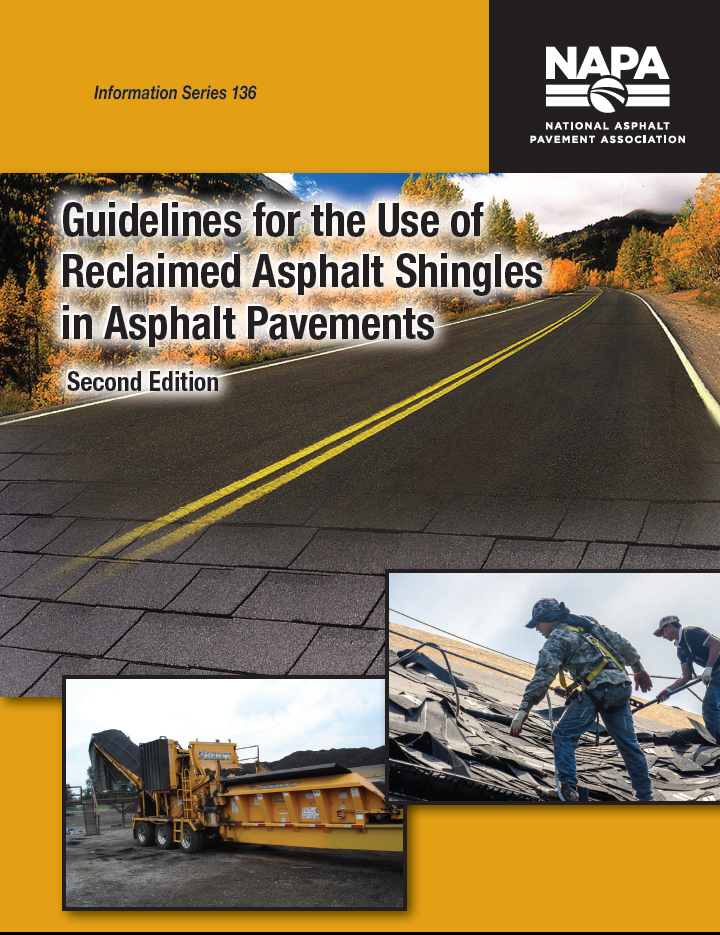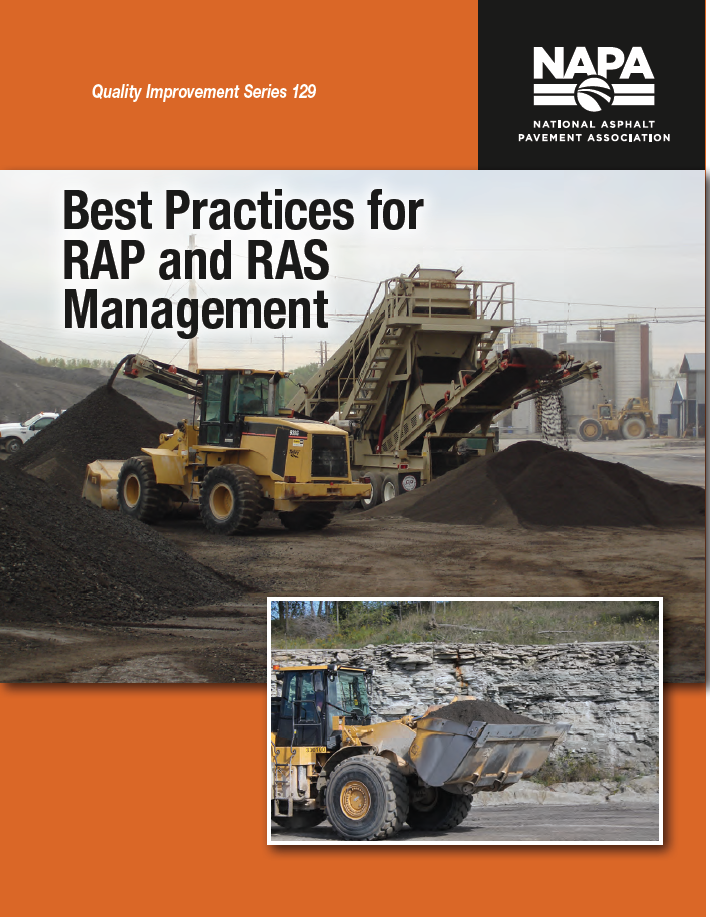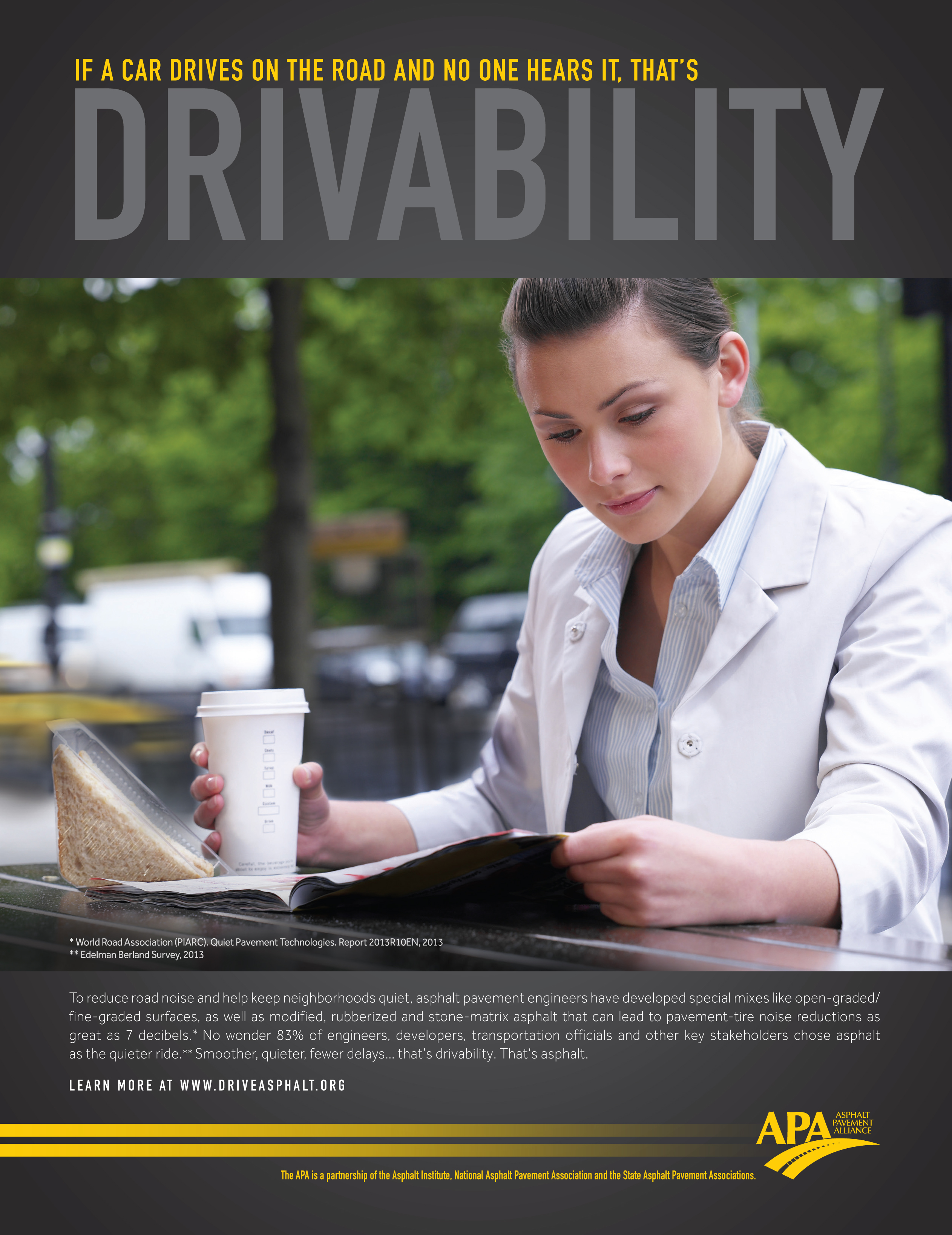Recycled Material
Asphalt pavements provide the smoothest, quietest ride, and its speed of construction reduces user delays and disruptions. But, it also is the most sustainable option for paving. The asphalt pavement industry has been a constant innovator in finding ways to make its products more environmentally friendly: from reclaiming old asphalt pavements and rejuvenating their component parts for use in new pavements to the incorporation of recycled materials to the adoption of energy-saving warm-mix asphalt technologies. It continues to be reused at a greater rate than any other product in the U.S. A wide range of waste materials are now incorporated into asphalt pavements, including recycled tire rubber, slags, foundry sand, glass, and plastics, but the most widely used recycled products are reclaimed asphalt pavement (RAP) and recycled asphalt shingles (RAS). The use of recycled materials in asphalt pavements saves more than 60 million cubic yards of landfill space each year while reducing life cycle costs of pavements. According to the 2018 National Asphalt Pavement Association's (NAPA) Asphalt Pavement Industry Survey on Recycled Materials and Warm-Mix Asphalt Usage, Illinois uses between 23 – 28% RAP annually with about 3.9 million tons of RAP stockpiled.
Asphalt mixtures containing recycled materials can be designed to meet and exceed the requirements as asphalt mixtures with all virgin materials while providing environmental, economic, and engineering benefits. It is important to note that quality recycled mixtures have been successfully engineered, designed, produced and constructed for many years. However, there is not a uniform percentage or design that may be implemented. As with any asphalt pavement mixture, designers should consider the characteristics of the virgin material (aggregate and asphalt binder) being used, the plant producing the mixture, the project attributes (base condition, lift location, climate, haul distance, etc), the amount and type of recycled material, and owner acceptance requirements when developing the design. In particular, RAP and RAS should be tested and classified to determine the amount, properties, and quality of available asphalt binder as well as other properties of the RAP/RAS including gradation, moisture, and absorption. In some cases, it may be necessary to use recycling agents or a softer asphalt binder to ensure the final mixture design delivers the desired level of product performance. For more information about processing and using reclaimed asphalt pavement and recycled asphalt shingles, consult the NAPA publication Best Practices for RAP and RAS Management (Quality Improvement Series 129).
Owners should develop acceptance programs that rely on criteria that use repeatable test methods related to field performance. In addition, specifications should not mandate the use of a specific recycled product in place of or in conjunction with other materials (virgin or recycled). Rather, specifications should allow the producer to determine the optimal use of all materials which allows the producer to provide a quality, sustainable, and economical asphalt mixture that meets acceptance requirements.




